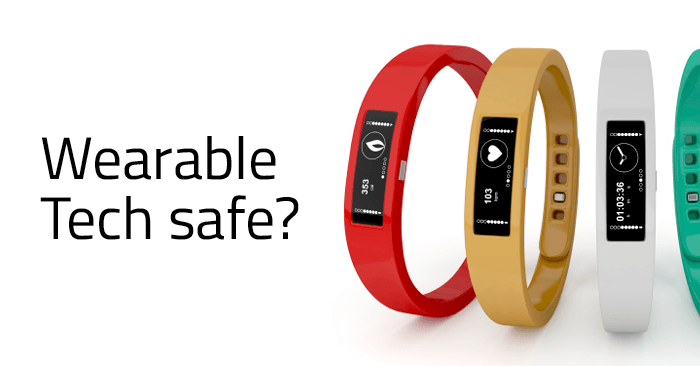How to get a Finnish IP address
The easiest way to improve your digital privacy is to switch your IP address using a VPN. We’ll …


Wearable technology is growing rapidly in popularity, with the consulting firm Deloitte predicting as many as 100 million wearable gadgets on the market in 2020.
These devices track users’ behavior, lifestyle, and performance, creating what’s known as a “quantifiable self” from the data. While maintaining this quantifiable self can help users follow a fitness regime or track personal goals, it also makes them vulnerable to hackers in a number of ways.
Wearable devices usually use Bluetooth synchronization to connect to the Internet. While this is handy for functionality, it creates a security risk, particularly for creative criminals. By remotely tracking your Bluetooth transmissions, a hacker could determine whether you’re at home or away. At first glance, this information isn’t particularly sensitive. However, it could alert observant criminals to the days and times when you’re away and your home is untended.
It’s important for users to note that wearable devices typically know your location, even if this information isn’t directly related to the data you’re gathering. If your location isn’t directly associated with what you’re tracking, take the time to turn the Bluetooth off. This simple step could help protect your privacy, though it often goes overlooked by busy users.
One of the biggest vulnerabilities of wearable tech is present right in the name. These devices are worn directly on the body and are almost always visible to others. If you’re wearing Google Glass, others know at a glance that you own this technology. Hackers won’t have to do much research to figure out what kind of wearable devices you own, so they can quickly and accurately target your devices as soon as they see them.
While there isn’t a lot you can do about this vulnerability, it’s important to be aware of it. Protecting yourself on your wearable devices with proper security precautions is incredibly important, since this tech may go everywhere you do and attract the eye of nearby hackers. Know where the weaknesses are with these devices, and do what you can to combat them.
Many tech users assume a certain level of privacy and security exists with the apps and devices they use. However, wearable devices haven’t yet caught up with their privacy provisions. Approximately 52 percent of quantifiable self applications don’t have a privacy policy.
Some users may think the lack of such a policy means the application isn’t sharing or gathering their information, since the user hasn’t consented to a publicized policy. Many jurisdictions do indeed require a privacy policy for any company that collects and manages personal data.
However, the lack of a privacy policy for any self-tracking app simply highlights the lax attitude of the app developers to privacy and personal security. If they’ve overlooked this common inclusion, it’s worth wondering what else they’ve left unaddressed.
Ideally, users will refrain from using applications that don’t have a privacy policy and carefully read through the policy of any application they use.
One-fifth of quantified self applications that have user accounts transmit passwords in clear text. This means that your personal data could be displayed in a context that’s easy for almost any hacker to see. If your password is this unprotected, your other information is usually exposed as well — including your email address, name, and other identifying details, like your birthdate — which can make you more vulnerable to identity theft.
If you use the same password for multiple accounts, your wearable technology could make it overwhelmingly easy for hackers to gain access to these devices. The best thing you can do to protect yourself in this case is to use a password that’s completely unique for your wearable tech.
Most wearable tech applications connect with around five domains. However, some connect with up to 14 different domains for advertising, tracking, and other purposes. Users are often unaware of how many places their information is traveling. You should choose a unique user name that doesn’t incorporate your real name or identify you in any way when setting up an account for your wearable technology and associated applications. This can help protect your information when it’s passed to other domains.
It’s important to consider the type of information your applications are gathering and be aware of the fact that this data is likely being passed to third-party vendors. Many marketing companies collect data on user activity to better target their offers. Avoid using an app that tracks personal information you want to keep absolutely private.
Hackers aren’t the only people who pose a threat in the world of wearable technology. Unscrupulous users can create privacy threats with the devices as well. Discreet cameras can gather photos, videos, and audio in otherwise secure environments. Consumer analyst Rob Enderle believes that wearable devices will be banned from hospitals, courts, law offices, schools, and even public bathrooms because of such potentially threatening features.
The potential for abuse of wearable technology is present in numerous ways. Users should consider that others’ devices could constantly be capturing their activity in public spaces. Meanwhile, the user’s own device may transmit unwanted information depending on how it’s used. A hacker could use your location to determine when you’re not home, but an employee could use it to see when you’re out of the office on a long lunch. Parents or spouses can track family members.
Wearable devices can offer users a wealth of helpful information for everything from tracking the distance of a run to improving one’s sleep. Whether you’re using wearable technology as a handy alternative to a smartphone weighing down your pocket or as an integrated solution for tracking health and fitness, the possibilities are nearly endless.
The widespread use of such devices seems inevitable, making it more important than ever for users, developers, and the public at large to consider the possible security and privacy threats present with this technology and do when they can to keep themselves and those around them safe.
